Computed tomography is making a significant impact in the field of materials science in recent years. In this paper the authors report on advances made in three areas of characterization and also identified where further research needs to be focused. First we report on a new approach to data analysis called “Data Constrained Modelling (DCM)” in which compositional tomography can be undertaken rather than adsorption or phase contrast tomography. This is achieved by collecting X-ray CT data at different energies and then combining the datasets to reconstruct 3D compositional tomography. Second, on the application of this approach to inhibited primers typical of those used in the aerospace industry. Aerospace primers are effectively composite materials containing inorganic phases which are bound together with a polymer. Understanding the materials science of these systems requires information over several orders of magnitude in length-scale. In this paper we report on how DCM can be used to extend our understanding at the smaller length scales at the limits of resolution of the technique. The third and final advance is in extending the approach to include 4-dimensional studies. In this case we examine the primer before and after leaching. This process causes changes in the primer which can be both detected and quantified using the above approach.
1.
Introduction
In this paper, we study the initial boundary value problem of the nonlinear viscoelastic hyperbolic problem with variable exponents:
where $ \Omega\subset R^{n}(n\geq1) $ is a bounded domain in $ R^n $ with a smooth boundary $ \partial \Omega $, $ \nu $ is the unit outer normal to $ \partial\Omega $, the exponents $ m(x) $ and $ p(x) $ are continuous functions on $ \overline{\Omega} $ with the logarithmic module of continuity:
where
In addition to this condition, the exponents satisfy the following:
$ g: R^{+} \, \rightarrow R^{+} $ is a $ C^{1} $ function satisfying
The equation of Problem $ (1.1) $ arises from the modeling of various physical phenomena such as the viscoelasticity and the system governing the longitudinal motion of a viscoelastic configuration obeying a nonlinear Boltzmann's model, or electro-rheological fluids, viscoelastic fluids, processes of filtration through a porous medium, and fluids with temperature-dependent viscosity and image processing which give rise to equations with nonstandard growth conditions, that is, equations with variable exponents of nonlinearities. More details on these problems can be found in previous studies [1,2,3,4,5,6].
When $ m(x) $ and $ p(x) $ are constants, Messaoudi [7] discussed the nonlinear viscoelastic wave equation
he proved that any weak solution with negative initial energy blows up in finite time if $ p > m $, and a global existence result for $ p\leq m $. The results were improved later by Messaoudi [8], where the blow-up result in finite time with positive initial energy was obtained. Moreover, Song [9] showed the finite-time blow-up of some solutions whose initial data had arbitrarily high initial energy. In the same year, Song [10] studied the initial-boundary value problem
and proved the nonexistence of global solutions with positive initial energy. Cavalcanti, Domingos, and Ferreira [11] were concerned with the non-linear viscoelastic equation
and proved the global existence of weak solutions. Moreover, they obtained the uniform decay rates of the energy by assuming a strong damping $ \triangle u_{t} $ acting in the domain and providing the relaxation function which decays exponentially.
In 2017, Messaoudi [12] considered the following nonlinear wave equation with variable exponents:
where $ a, b $ are positive constants. By using the Faedo$ - $Galerkin method, the existence of a unique weak solution is established under suitable assumptions on the variable exponents $ m(x) $ and $ p(x) $. Then this paper also proved the finite-time blow-up of solutions and gave a two-dimensional numerical example to illustrate the blow up result. Park [13] showed the blow up of solutions for a viscoelastic wave equation with variable exponents
where the exponents of nonlinearity $ p(x) $ and $ m(x) $ are given functions and $ a, b > 0 $ are constants. For nonincreasing positive function $ g $, they prove the blow-up result for the solutions with positive initial energy as well as nonpositive initial energy. Alahyane [14] discussed the nonlinear viscoelastic wave equation with variable exponents
where $ \mu $ is a nonnegative constant and the exponent of nonlinearity $ p(x) $ and $ g $ are given functions. Under arbitrary positive initial energy and specific conditions on the relaxation function $ g $, they prove a finite-time blow-up result and give some numerical applications to illustrate their theoretical results. Ouaoua and Boughamsa [15] considered the following boundary value problem:
the authors established the local existence by using the Faedo$ - $Galerkin method with positive initial energy and suitable conditions on the variable exponents $ m(x) $ and $ r(x) $. In addition, they also proved that the local solution is global and obtained the stability estimate of the solution. Ding and Zhou [16] considered a Timoshenko-type equation
they prove that the solutions blow up in finite time with positive initial energy. Therefore, the existence of finite-time blow-up solutions with arbitrarily high initial energy is established, and the upper and lower bounds of the blow-up time are derived. More related references can be found in [17,18,19,20,21,22].
Motivated by [7,13,14], we considered the existence of the solutions and their blow-up for the nonlinear damping and viscoelastic hyperbolic problem with variable exponents. Our aim in this work is to prove the existence of the weak solutions and to find sufficient conditions on $ m(x) $ and $ p(x) $ for which the blow-up takes place.
This article consists of three sections in addition to the introduction. In Section 2, we recall the definitions and properties of $ L^{p(x)}(\Omega) $ and the Sobolev spaces $ W^{1, p(x)}(\Omega) $. In Section 3, we prove the existence of weak solutions for Problem (1.1). In Section 4, we state and prove the blow-up result for solutions with positive initial energy as well as nonpositive initial energy.
2.
Preliminaries
In this section, we review some results regarding Lebesgue and Sobolev spaces with variable exponents first. All of these results and a comprehensive study of these spaces can be found in [23]. Here $ (\cdot, \cdot) $ and $ \langle \cdot, \cdot \rangle $ denote the inner product in space $ L^{2}(\Omega) $ and the duality pairing between $ H^{-2}(\Omega) $ and $ H_{0}^{2}(\Omega) $.
The variable exponent Lebesgue space $ L^{p(x)}(\Omega) $ is defined by
this space is endowed with the norm
The variable exponent Sobolev space $ W^{1, p(x)}(\Omega) $ is defined by
the corresponding norm for this space is
define$ \ W_0^{1, p(x)}(\Omega) $ as the closure of $ \ C_0^\infty(\Omega) $ with respect to the$ \ W^{1, p(x)}(\Omega) $ norm. The spaces $ \ L^{p(x)}(\Omega), W^{1, p(x)}(\Omega) $ and $ W_0^{1, p(x)}(\Omega) $ are separable and reflexive Banach spaces when $ 1 < p^-\leq p^+ < \infty $, where $ p^-: = ess\inf\limits_{\Omega} p(x) $ and $ p^+: = ess\sup\limits_{\Omega} p(x). $ As usual, we denote the conjugate exponent of $ p(x) $ by $ p'(x) = p(x)/(p(x)-1) $ and the Sobolev exponent by
Lemma 2.1. If $ p_{1}(x), \ p_{2}(x)\in C_{+}(\overline{\Omega}) = \{h\in C(\overline{\Omega}):\min\limits_{x\in \overline{\Omega}} h(x) > 1\} $, $ p_{1}(x)\leq p_{2}(x) $ for any $ x\in\Omega $, then there exists the continuous embedding $ L^{p_{2}(x)}(\Omega)\hookrightarrow L^{p_{1}(x)}(\Omega) $, whose norm does not exceed $ |\Omega|+1 $.
Lemma 2.2. Let $ p(x), \ q(x)\in C_{+}(\overline{\Omega}). $ Assuming that $ q(x) < p^{\ast}(x) $, there is a compact and continuous embedding $ W^{k, p(x)}(\Omega)\hookrightarrow L^{q(x)}(\Omega). $
Lemma 2.3. (Hölder's inequality) [24] For any $ u\in L^{p(x)}(\Omega) $ and $ v\in L^{q(x)}(\Omega) $, then the following inequality holds:
Lemma 2.4. For $ u\in L^{p(x)}(\Omega) $, the following relations hold:
Next, we give the definition of the weak solution to Problem $ (1.1) $.
Definition 2.1. A function u(x, t) is called a weak solution for Problem $ (1.1) $, if $ u\in C(0, T;H_{0}^{2}(\Omega)) $ $ \cap C^{1}(0, T;H_{0}^{2}(\Omega))\cap C^{2}(0, T;H^{-2}(\Omega)) $ with $ u_{tt}\in L^{2}(0, T;H_{0}^{2}(\Omega)) $ and u satisfies the following conditions:
(1) For every $ \omega \in H_{0}^{2}(\Omega) $ and for $ a.e. \, t\in (0, T) $
(2) $ u(x, 0) = u_{0}(x)\in H_{0}^{2}(\Omega), \, u_{t}(x, 0) = u_{1}(x)\in H_{0}^{2}(\Omega). $
3.
The local existence of weak solution
In this section, we prove the existence of a weak solution for Problem $ (1.1) $ by making use of the Faedo–Galerkin method and the contraction mapping principle. For a fixed $ T > 0 $, we consider the space $ \mathscr H = C(0, T;H_{0}^{2}(\Omega))\cap C^{1}(0, T;H_{0}^{2}(\Omega)) $ with the norm $ ||v||_{\mathscr H}^{2} = \max\limits_{0\leq t\leq T} (||\triangle v_{t}||_{2}^{2}+l||\triangle v||_{2}^{2}) $.
Lemma 3.1. Assume that $ (1.4) $, $ (1.5) $, and $ (1.6) $ hold, let $ (u_{0}, u_{1})\in H_{0}^{2}(\Omega)\times H_{0}^{2}(\Omega) $, for any $ T > 0 $, $ v\in \mathscr H $, then there exists $ u\in C(0, T;H_{0}^{2}(\Omega))\cap C^{1}(0, T;H_{0}^{2}(\Omega))\cap C^{2}(0, T;H^{-2}(\Omega)) $ with $ \ u_{tt}\in L^{2}(0, T;H_{0}^{2}(\Omega)) $ satisfying
Proof. Let $ \{\omega_{j}\}_{j = 1}^{\infty} $ be the orthogonal basis of $ H\mathcal{}_{0}^{2}(\Omega) $, which is the standard orthogonal basis in $ L^{2}(\Omega) $ such that
we denote by $ V_{k} = {\rm span}\{\omega_{1}, \omega_{2}, \cdot\cdot\cdot, \omega_{k}\} $ the subspace generated by the first $ k $ vectors of the basis $ \{\omega_{j}\}_{j = 1}^{\infty} $. By normalization, we have $ ||\omega_{j}||_{2} = 1 $. For all $ k\geq1 $, we seek $ k $ functions $ c_{1}^{k}(t), c_{2}^{k}(t), \ldots, c_{k}^{k}(t)\in C^{2}[0, T] $ such that
satisfying the following approximate problem
where
thus, $ (3.2) $ generates the initial value problem for the system of second-order differential equations with respect to $ c_{i}^{k}(t) $:
where
and
by Peano's Theorem, we infer that the Problem $ (3.3) $ admits a local solution $ c_{i}^{k}(t)\in C^{2}[0, T] $.
$ \textbf{The} $ $ \textbf{first} $ $ \textbf{estimate}. $ Multiplying $ (3.2) $ by $ c_{it}^{k}(t) $ and summing with respect to $ i $, we arrive at the relation
By simple calculation, we have
where
inserting $ (3.5) $ into $ (3.4) $, using Hölder's inequality and Young's inequality, we obtain
using the embedding $ H_{0}^{2}(\Omega)\hookrightarrow L^{2(p(x)-1)}(\Omega) $ and Lemma $ 2.4 $, we easily obtain
where $ C $ is a positive constant. We denote by $ C $ various positive constants that may be different at different occurrences.
Combining $ (3.6) $ and $ (3.7) $, we obtain
by Gronwall's inequality, there exists a positive constant $ C_{T} $ such that
therefore, there exists a subsequence of $ \{u^{k}\}_{k = 1}^{\infty} $, which we still denote by $ \{u^{k}\}_{k = 1}^{\infty} $, such that
$ \textbf{The} $ $ \textbf{second} $ $ \textbf{estimate}. $ Multiplying $ (3.2) $ by $ c_{itt}^{k}(t) $ and summing with respect to $ i $, we obtain
Note that we have the estimates for $ \varepsilon > 0 $
and
similar to $ (3.6) $ and $ (3.7) $, from $ H_{0}^{2}(\Omega)\hookrightarrow L^{2}(\Omega) $, we have
Taking into account $ (3.10)-(3.14) $, we obtain
integrating $ (3.15) $ over $ (0, t) $, we obtain
taking $ \varepsilon $ small enough in (3.16), for some positive constant $ C_{T} $, we obtain
we observe that estimate $ (3.17) $ implies that there exists a subsequence of $ \{u^{k}\}_{k = 1}^{\infty} $, which we still denote by $ \{u^{k}\}_{k = 1}^{\infty} $, such that
In addition, from $ (3.9) $, we have
Next, we will deal with the nonlinear term. Combining $ (3.9) $, $ (3.18) $, and Aubin–Lions theorem [25], we deduce that there exists a subsequence of $ \{u^{k}\}_{k = 1}^{\infty} $ such that
then
using the embedding $ H_{0}^{2}(\Omega)\hookrightarrow L^{2(m(x)-1)}(\Omega) $ and Lemma $ 2.4 $, we have
hence, using $ (3.21) $ and $ (3.22) $, we obtain
Setting up $ k\rightarrow \infty $ in $ (3.2) $, combining with $ (3.9) $, $ (3.18) $, $ (3.19) $, and $ (3.23) $, we obtain
To handle the initial conditions. From $ (3.9) $ and Aubin–Lions theorem, we can easily get $ u^{k}\rightarrow u $ in $ C(0, T;L^{2}(\Omega)) $, thus $ u^{k}(0)\rightarrow u(0) $ in $ L^{2}(\Omega) $, and we also have that $ u^{k}(0) = u_{0}^{k}\rightarrow u_{0} $ in $ H_{0}^{2}(\Omega) $, hence $ u(0) = u_{0} $ in $ H_{0}^{2}(\Omega) $. Similarly, we get that $ u_{t}(0) = u_{1} $.
Uniqueness. Suppose that $ (3.1) $ has solutions $ u $ and $ z $, then $ \omega = u-z $ satisfies
Multiplying the first equation of Problem $ (3.1) $ by $ \omega_{t} $ and integrating over $ \Omega $, we have
from the inequality
for all $ a, b\in R^{n} $ and a.e. $ x\in\Omega $, we obtain
which implies that $ \omega = 0 $. This completes the proof. □
Theorem 3.1. Assume that $ (1.4) $ and $ (1.6) $ hold, let the initial date $ (u_{0}, u_{1})\in H_{0}^{2}(\Omega)\times H_{0}^{2}(\Omega) $, and
then there exists a unique local solution of Problem $ (1.1) $.
Proof. For any $ T > 0 $, consider $ M_{T} = \{u\in\mathscr H:u(0) = u_{0}, u_{t}(0) = u_{1}, ||u||_{\mathscr H}\leq M\} $. Lemma $ 3.1 $ implies that for $ \forall v\in M_{T} $, there exists $ u = S(v) $ such that $ u $ is the unique solution to Problem $ 3.1 $. Next, we prove that for a suitable $ T > 0 $, $ S $ is a contractive map satisfying $ S(M_{T})\subset M_{T} $.
Multiplying the first equation of the Problem $ (3.1) $ by $ u_{t} $ and integrating it over $ (0, t) $, we obtain
using Hölder's inequality and Young's inequality, we have
thus, $ (3.25) $ becomes
hence, we have
where $ \lambda_{0} = ||u_{1}||_{2}^{2}+||\triangle u_{1}||_{2}^{2}+||\Delta u_{0}||_{2}^{2} $, choosing $ \gamma = \frac{1}{2T} $ such that
For any $ v\in M_{T} $, by choosing $ M $ large enough so that
and $ T > 0 $, sufficiently small so that
we obtain $ ||u||_{\mathscr H}\leq M $, which shows that $ S(M_{T})\subset M_{T} $.
Let $ v_{1}, v_{2}\in M_{T}, u_{1} = S(v_{1}), u_{2} = S(v_{2}), u = u_{1}-u_{2} $, then $ u $ satisfies
Multiplying by $ u_{t} $ and integrating over $ \Omega\times(0, t) $, we obtain
where $ f(v) = |v|^{p(x)-2}v $. From $ (1.6) $ and $ (3.24) $, we obtain
Now, we evaluate
where $ v = v_{1}-v_{2} $ and $ \xi = \alpha v_{1}+(1-\alpha)v_{2} $, $ 0\leq\alpha\leq1 $. Thanks to Young's inequality and Hölder's inequality, we have
Inserting $ (3.28) $ into $ (3.27) $, choosing $ \delta $ small enough, we obtain
taking $ T $ small enough so that $ \frac{(p^{+}-1)^{2}CT}{\delta}(M^{2(p^{-}-2)}+M^{2(p^{+}-2)}) < 1 $, we conclude
thus, the contraction mapping principle ensures the existence of a weak solution to Problem $ (1.1) $. This completes the proof. □
4.
The blow-up the solution
In this section, we show that the solution to Problem $ (1.1) $ blows up in finite time when the initial energy lies in positive as well as nonpositive. For this task, we define
by the definition of $ E(t) $, we also have
Now, we set
and
where the constant $ E_{2}\in(E(0), E_{1}) $ will be discussed later, and $ B $ is the best constant of the Sobolev embedding $ H_{0}^{2}(\Omega)\hookrightarrow L^{p(x)}(\Omega) $. It follows from $ (4.2) $ that
and $ H(t) $ is a non$ - $decreasing function.
To prove Theorem $ 4.1 $, we need the following two lemmas:
Lemma 4.1. Suppose that $ (1.6) $ holds and the exponents $ m(x) $ and $ p(x) $ satisfy condition $ (1.4) $ and $ (1.5) $. Assume further that
then there exists a constant $ \lambda_{2} > \lambda_{1} $ such that
Proof. Using $ (1.6) $, $ (4.1) $, Lemma $ 2.4 $, and the embedding $ H_{0}^{2}(\Omega)\hookrightarrow L^{p(x)}(\Omega) $, we find that
where $ \lambda: = \lambda(t) = B_{1}^{2}l||\triangle u||_{2}^{2}. $ Analyzing directly the properties of $ G(\lambda) $, we deduce that $ G(\lambda) $ satisfies the following properties:
It is easily verified that $ G(\lambda) $ is strictly increasing for $ 0 < \lambda < \lambda_{1} $, strictly decreasing for $ \lambda_{1} < \lambda $, $ G(\lambda)\rightarrow -\infty $ as $ \lambda\rightarrow +\infty $, and $ G(\lambda_{1}) = E_{1} $. Since $ E(0) < E_{1} $, there exists a $ \lambda_{2} > \lambda_{1} $ such that $ G(\lambda_{2}) = E(0) $. By $ (4.6) $, we see that $ G(\lambda(0))\leq E(0) = G(\lambda_{2}) $, which implies $ \lambda(0)\geq\lambda_{2} $ since the condition $ \lambda(0) > \lambda_{1}. $ To prove $ (4.5) $, we suppose by contradiction that for some $ t_{0} > 0 $, $ \lambda_{t_{0}} = B_{1}^{2}l||\triangle u(t_{0})||_{2}^{2} < \lambda_{2} $. The continuity of $ B_{1}^{2}l||\triangle u||_{2}^{2} $ illustrates that we could choose $ t_{0} $ such that $ \lambda_{1} < \lambda_{t_{0}} < \lambda_{2} $, then we have $ E(0) = G(\lambda_{2}) < G(\lambda_{t_{0}})\leq E(t_{0}) $. This is a contradiction. The proof is completed. □
Lemma 4.2. Let the assumption in Lemma $ 4.1 $ be satisfied. For $ t\in[0, T) $, we have
Proof. $ (4.4) $ indicates that $ H(t) $ is nondecreasing with respect to $ t $, thus
It follows from $ (1.6) $, $ (4.1) $, and Lemma $ 4.1 $ that
The proof is completed.
Our blow-up result reads as follows:
Theorem 4.3. Suppose that
and
hold, if the following conditions
are satisfied, then there exists $ T^{\ast} < +\infty $ such that
Proof. Assume by contradiction that $ (4.8) $ does not hold true, then for $ \forall T^{\ast} < +\infty $ and all $ t\in[0, T^{\ast}] $, we get
where $ C_{\ast} $ is a positive constant.
Now, we define $ L(t) $ as follows:
where $ \varepsilon > 0 $, small enough to be chosen later, and
The remaining proof will be divided into two steps.
$ \textbf{Step} $ $ \textbf{1:} $ $ \textbf{Estimate} $ $ \textbf{for} $ $ \textbf{L'(t)}. $ By taking the derivative of $ (4.10) $ and using $ (1.1) $, we obtain
applying Hölder's inequality and Young's inequality, we have
where $ 0 < \varepsilon_{1} < \frac{p^{-}-2}{p^{-}} $, then
rewriting $ (4.7) $ to $ (\frac{p^{-}}{2}-1)l-\frac{1}{2p^{-}}(1-l) > 0 $, using $ (4.1) $ and $ (4.3) $ to substitute for $ (g\diamond \bigtriangleup u) $, choosing $ \varepsilon_{1} > 0 $ sufficiently small, we obtain
$ \textbf{Step} $ $ \textbf{1.1:} $ $ \textbf{Estimate} $ $ \textbf{for} $ $ \epsilon\frac{\left\{\left(\frac{p^{-}(1-\varepsilon_{1})}{2}-1\right)\frac{l}{2}-\frac{1}{2p^{-}(1-\varepsilon_{1})}\frac{1-l}{2}\right\}}{l}(B_{1}^{2})^{\frac{-p^{-}}{p^{-}-2}}-\epsilon p^{-}(1-\varepsilon_{1})E_{2}. $ It follows from the condition in Theorem $ 3.1 $ that
here, we can take $ \varepsilon_{1} > 0 $ sufficiently small and choose $ E_{2}\in(E(0), E_{1}) $ sufficiently close to $ E(0) $ such that
Therefore, we obtain by combining $ (4.11) $ and $ (4.12) $,
$ \textbf{Step} $ $ \textbf{1.2:} $ $ \textbf{Estimate} $ $ \textbf{for} $ $ -\epsilon \int_{\Omega}|u_{t}|^{m(x)-2}u_{t}udx. $ Applying Young's inequality with $ \varepsilon_{2} > 1 $, the embedding $ L^{p(x)}(\Omega)\hookrightarrow L^{m(x)}(\Omega) $, Lemma $ 2.4 $ and Lemma $ 4.2 $, we easily have
where $ C_{1} = \min\left\{H(0), 1\right\} $, $ C_{2} = 2(1+|\Omega|)^{m^{+}}C_{1}^{\alpha(m^{-}-m^{+})} $. Next, we have
and
which illustrate
where $ C_{3} = 2\min\left\{p^{-}H(0), 1\right\}^{\frac{m^{-}}{p^{+}}-\frac{m^{+}}{p^{-}}} $. Recalling $ 0 < \alpha\leq\frac{p^{-}-m^{+}}{p^{-}(m^{+}-1)} $ and Lemma $ 4.2 $, apparently,
it follows from $ (4.13) $, $ (4.14) $, and $ (4.15) $ that
let us fix the constant $ \varepsilon_{2} $ so that
and then choose $ \epsilon $ so small that $ 1-\alpha > \epsilon\varepsilon_{1} $. Therefore, we obtain
where
Inequalities $ (4.16) $ and Lemma $ 4.2 $ imply $ L(t)\geq L(0). $ Therefore, for a sufficiently small $ \epsilon $, we have
$ \textbf{Step} $ $ \textbf{2:} $ $ \textbf{A} $ $ \textbf{differential} $ $ \textbf{inequality} $ $ \textbf{for} $ $ \textbf{L(t)}. $ Applying Hölder's inequality, Young's inequality and the embedding $ L^{p(x)}(\Omega)\hookrightarrow L^{2}(\Omega) $, we easily obtain
where $ \frac{1}{\mu}+\frac{1}{\nu} = 1.\ $Choosing $ \mu = 2(1-\alpha) > 1 $, then $ \nu = \frac{2(1-\alpha)}{2(1-\alpha)-1}, \ $further, $ (4.17) $ can be rewritten as
recalling $ 0 < \alpha < \frac{p^{-}-2}{2p^{-}} $, we obtain
with $ C_{4} = \min\{p^{-}H(0), 1\}^{\frac{2-p^{+}[2(1-\alpha)-1]}{p^{+}[2(1-\alpha)-1]}} $. Inserting $ (4.19) $ into $ (4.18) $, we obtain
We now estimate
therefore, combining $ (4.20) $ and $ (4.21) $, we obtain
where
Combining $ (4.16) $ and $ (4.22) $, we arrive at
A simple integration of $ (4.23) $ over $ (0, t) $ yields
this shows that $ L(t) $ blows up in finite time
furthermore, one gets from $ (4.22) $ that
it easily follows that
and using Lemma $ 4.2 $, we obtain
this leads to a contradiction with $ (4.9) $. Thus, the solution to Problem $ (1.1) $ blows up in finite time. □
Author contributions
Ying Chu: Methodology, Wring-original draft, Writing-review editing; Bo Wen and Libo Cheng: Methodology, Writing-original draft.
Use of AI tools declaration
The authors declare they have not used Artificial Intelligence (AI) tools in the creation of this article.
Acknowledgments
The authors express their heartfelt thanks to the editors and referees who have provided some important suggestions. This work was supported by Science and Technology Development Plan Project of Jilin Province, China (20240101307JC).
Conflict of interest
The authors declare there is no conflict of interest.











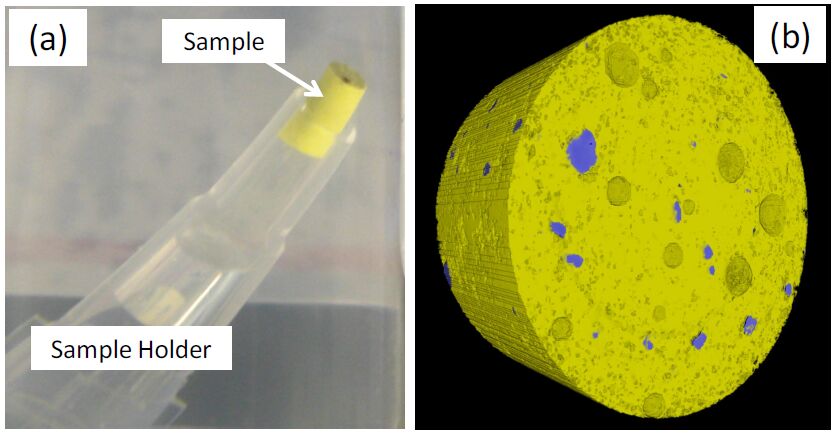
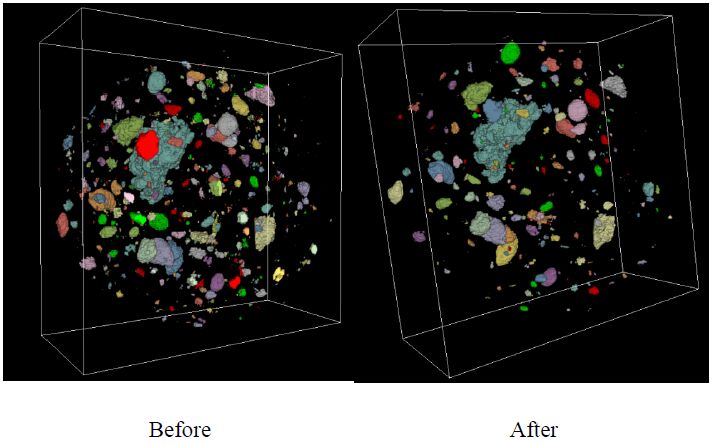
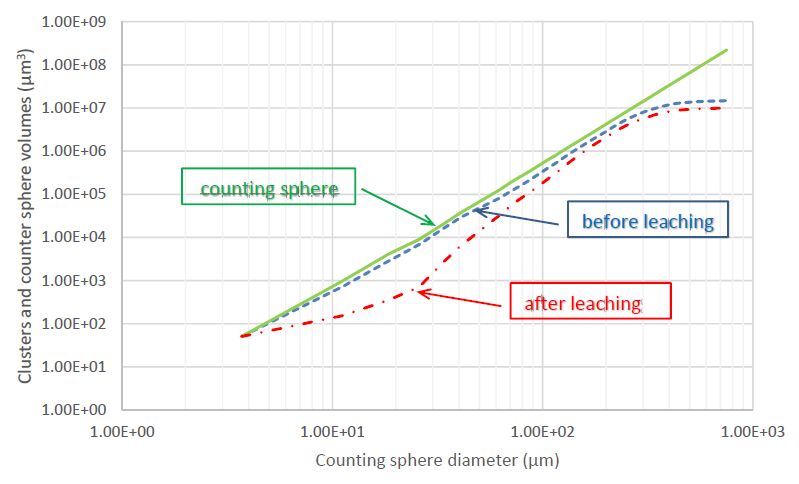
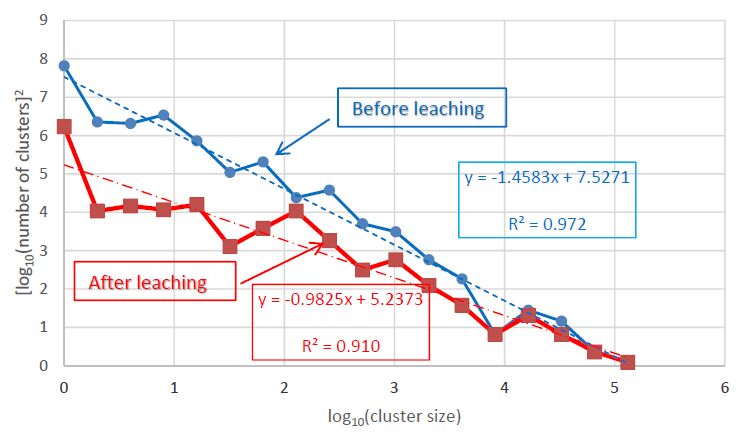
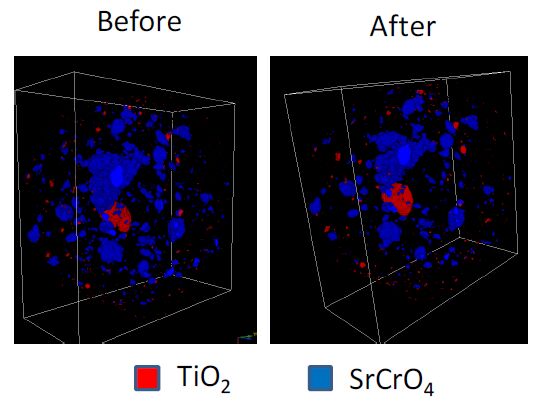
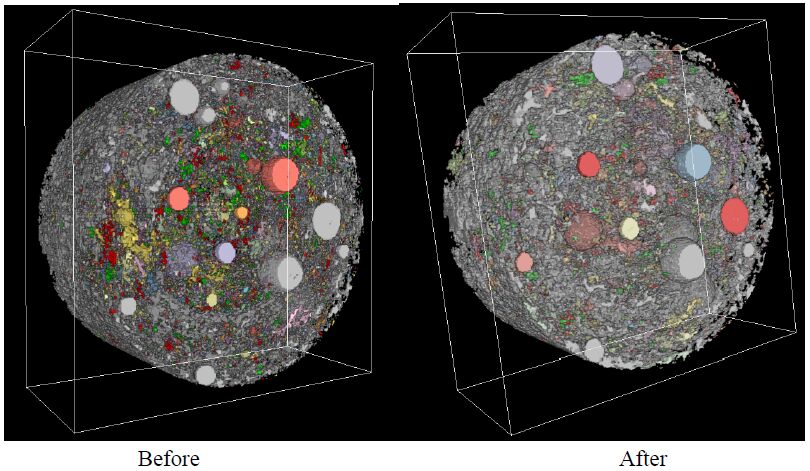
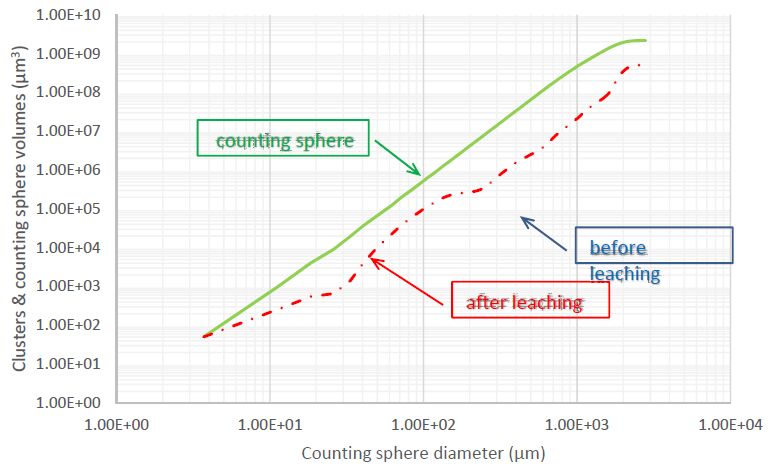


 DownLoad:
DownLoad: